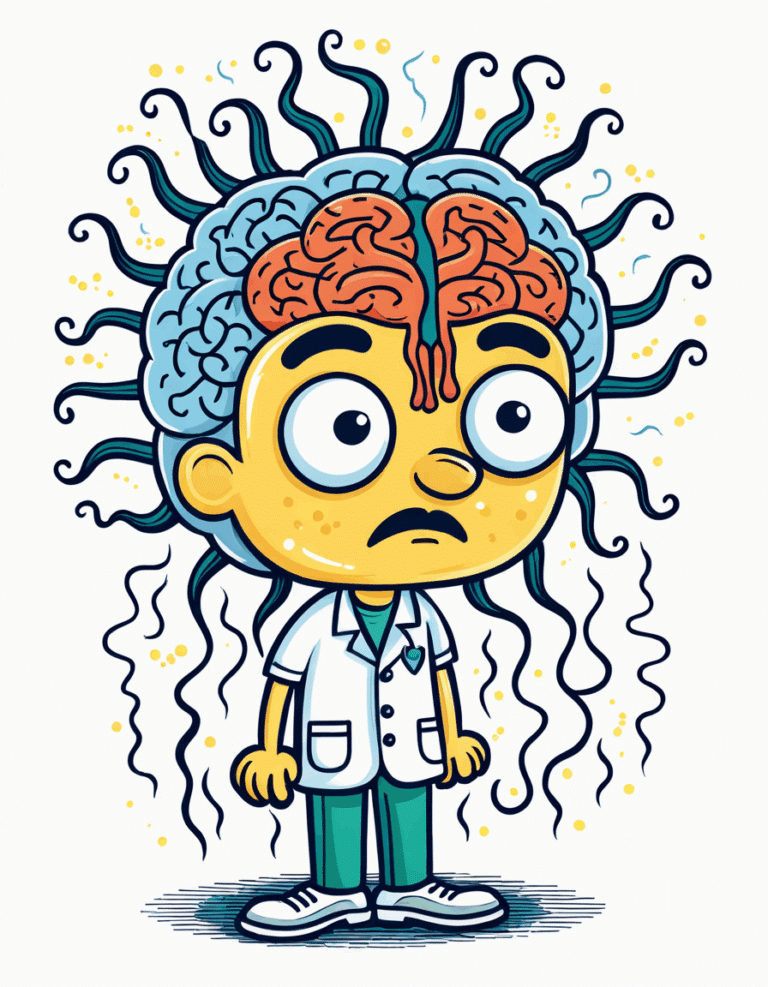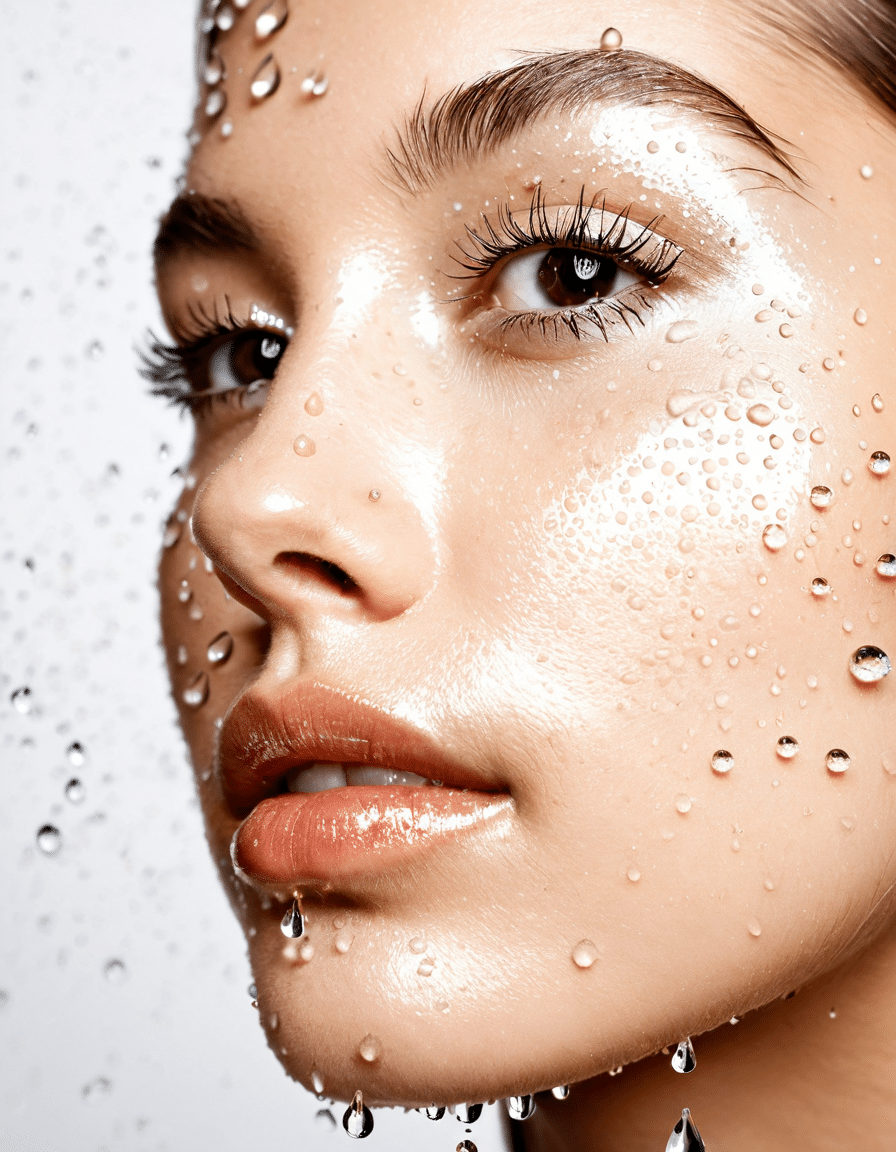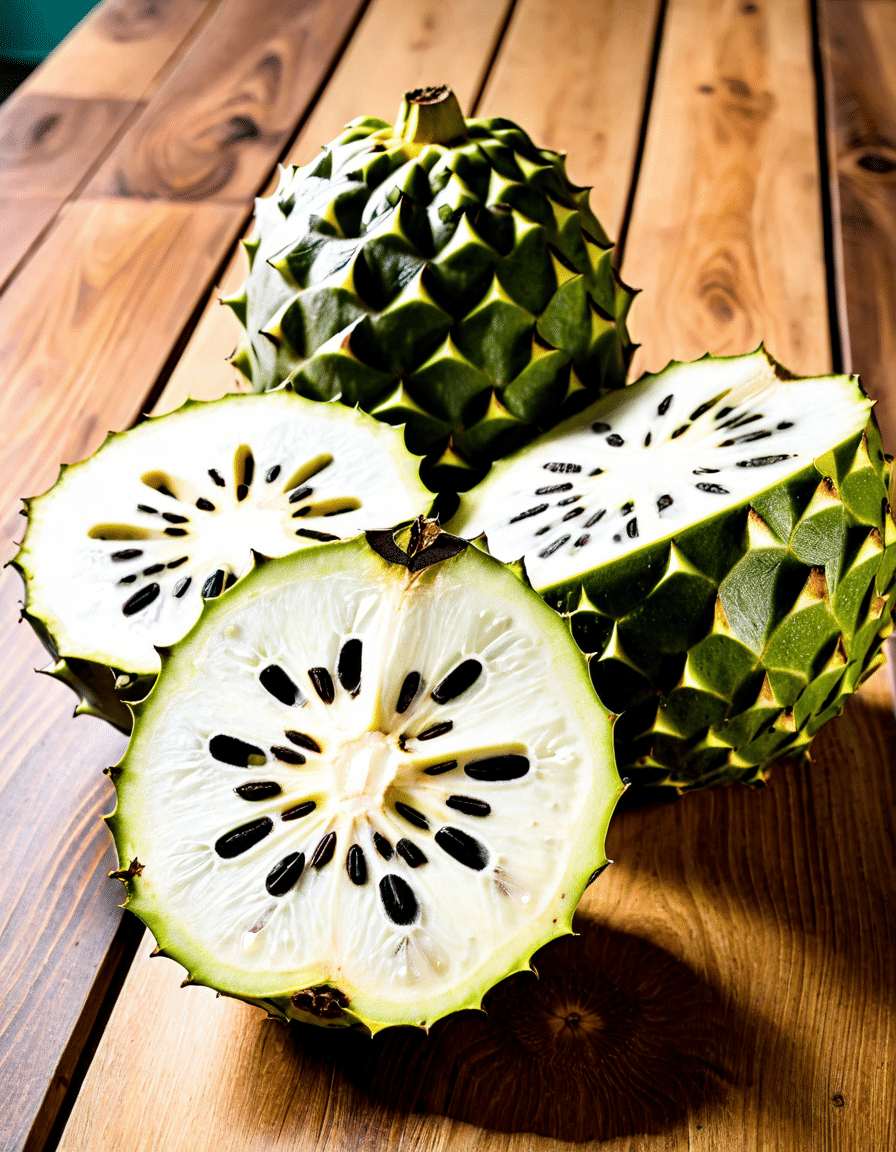Welcome to the electrifying world of the hypomaniac! If you’re someone who’s ever felt an adrenaline rush just by waking up, then you’re likely to appreciate this state of mind that’s laden with intensity and excitement. Hypomania isn’t just a term tossed around in psychology; it reflects thrilling characteristics that can elevate creativity and push boundaries when channelled correctly. In this article, we’re diving deep into the magnificent aspects of being a hypomaniac and how these traits can propel you towards greatness—much like the fitness journeys we cherish at Chiseled Magazine!
Let’s get right into it! Understanding these traits can help you maximize their potential in your personal and professional life. So buckle up as we explore the top seven thrilling characteristics of a hypomaniac!

Top 7 Thrilling Characteristics of a Hypomaniac
Hypomania is like a shot of espresso for the spirit! People often feel a surge of positivity that can make even the gloomiest days brighter. Richard Branson, the dynamic entrepreneur, has shared how his hypomanic traits help fuel his relentless drive. This euphoria can transform mundane tasks into exhilarating challenges and elevate productivity like you wouldn’t believe. Imagine diving into your fitness routine with that kind of energy—every rep turns into a celebration.
Creativity thrives in the hypomanic state. Artists like Vincent Van Gogh and musicians such as Kanye West have long been suspected of having hypomanic traits, sparking their groundbreaking masterpieces. When hypomania kicks in, it’s like flipping a switch; ideas pour out, leading to innovations that captivate and inspire. Think about it—when you’re feeling that boost of energy, why not use it to brainstorm your next workout regimen? Who knows, you might just come up with the next big trend in fitness classes!
Let’s not sugarcoat it; hypomanic individuals often dive into impulsive decisions like a kid in a candy store. Elon Musk, with all his risk-taking boldness, is a prime example of channeling these impulses into massive successes like SpaceX and Tesla. Of course, this quick decision-making can have both thrilling payoffs and consequences. Embrace life and be willing to leap! Just remember, calculated risks can lead to revolutionary changes, whether it’s trying a new workout or embracing a fresh challenge.
Hypomaniacs often become the life of the party. They’re talkative, charming, and can easily captivate an audience—think about Oprah Winfrey and her ability to connect with everyone. When hypomanic, individuals radiate warmth and excitement, which enhances their social skills tremendously. Use that energy to forge connections with others, whether at the gym or in social settings. You might just inspire someone to join you on your fitness journey!
Ever had a conversation with someone who’s exceptionally animated? That’s hypomania in action! People in this state can spin vivid tales, keeping others on the edge of their seats. Though they might struggle with finding the right words at times, their enthusiasm compensates, creating an inspiring atmosphere. Use that dynamic communication to share your fitness goals with friends, persuade them to join you, or even motivate a crowd with exciting stories about achieving your last fitness milestone.
Ready for a night owl revelation? Those in hypomanic phases often function with reduced sleep! Celebrities like Lady Gaga have opened up about their irregular sleep cycles, which often lead to spurts of creativity during odd hours. While this lack of sleep can be dazzling, it’s crucial to strike a balance. Don’t ignore your body’s need for rest! Use those late-night hours for productive study or planning your workouts, but ensure you catch those Z’s to stay energised.
Hypomanics often develop a powerful sense of mission. Figures like Malala Yousafzai epitomize this drive, using their strong convictions to advocate for change. It’s this sense of purpose that can propel you toward your biggest goals, whether it’s getting shredded or making an impact in your community. Find that fire inside you, and let it guide your fitness goals. With dedication fueled by passion, the sky’s the limit!

Managing Hypomania: The Intersection of Health Conditions
While being a hypomaniac comes with its thrill, we must also consider potential health challenges. Many individuals face co-occurring conditions like nephropathy or hypoparathyroidism, which can impact mood and energy levels. Finding balance is critical. Hypnotherapy has surfaced as an effective tool for managing anxiety and stabilizing mood, creating a better landscape for hypomanics. Studies reveal that it can reduce stress and enhance well-being—perfect for those vibrant days when you’re feeling like a superhero.
Additionally, awareness of these intertwined health conditions allows you to prioritize your overall health. Managing nephropathy through diet and hydration can greatly enhance your mental stability, while understanding hypoparathyroidism might alleviate stress that triggers hypomanic episodes. Knowledge is your greatest weapon on this journey of self-discovery!

Navigating Hypomania: Practical Approaches
It’s time to seize the thrilling aspects of hypomania while walking the tightrope of balance. Harness your exhilaration without letting it spiral into chaos. Mindfulness practices can ground your experience. Daily check-ins with your mental health professional and integrating holistic habits foster control and clarity.
When emotions run high, it’s essential to stay centered. Practicing structured routines with fitness goals can provide the framework to manage those highs while pushing towards ambitious aspirations. Maintaining a healthy lifestyle, adorned with exercise and nutritious meals, can drastically improve your overall well-being.
Recognizing the strengths and challenges of hypomania opens doors to enrich your experiences. By balancing that intense energy with awareness, you enable progress while maintaining stability. Embrace your journey with the excitement of self-discovery, and you’ll create a life that’s not just lived but celebrated!
In your pursuit of getting shredded, remember: every rep, every meal, and every moment counts. So go ahead, channel your inner hypomaniac, and carve out the best version of yourself! After all, greatness doesn’t wait—let’s chase it down together.
For inspiration along the way, check out these enticing stats on Bill Gates net worth and remember that financial fitness is also a thrilling journey! Here’s to your hypomanic adventure!

Hypomaniac Insights Into Their Thrilling Characteristics

The Nature of Hypomania
Hypomania, while often seen as a milder form of mania, presents some fascinating traits that can make life feel like a rollercoaster ride. People with hypomania can experience heightened creativity and an increased energy level, making them the life of the party. Imagine a hypomanic mind like a spotlight focused on a dazzling interactable show, rather than a single performer. For example, did you know actors in popular series, like the ones derived from Lee Child’s novels where you might spot a reacher actor, often channel such relentless energy into their performances? This extra zest can be infectious, drawing others in and sparking stimulating conversations.
However, it’s not all fun and games. Those with hypomania may also find themselves teetering on the brink of risky decisions, which can lead to impulsive behavior. It’s like riding a bike downhill without brakes; exhilarating yet potentially dangerous! Interestingly, such impulsivity can sometimes mirror classic pop culture references, like the never-ending antics of Jon Arbuckle, who often found himself in comically reckless predicaments. It’s a fine line, but yeah, that thrill can easily become a double-edged sword!
Trivia Worth Sharing
If you think you need to lace up your shoes tight to keep up with a hypomanic’s pace, you’re not alone. This state of mind can often lead individuals to great heights—literally and figuratively. There’s a saying that with great power comes great responsibility, and those affected must balance that creative spark with a touch of caution. Did you know that the average human height is around 16cm in inches higher for men than for women? It’s a fun fact that illustrates how diverse human experiences can be, much like the various expressions of hypomania.
But let’s zoom out for a moment. Ever wondered about bizarre historical conditions that share a few characteristics with hypomania? Take neurosyphilis, for instance. Although it’s rather serious, its impact on behavior provides a snapshot into how brain health can really shape personality traits. Just as hypomania can cause both euphoria and recklessness, neurosyphilis has long been a case study for understanding the depth of human psychology.
The Quirks of a Hypomaniac
Now, here’s something a bit quirky: hypomanics often engage in intense conversations on wild topics, darting from one idea to another like a child in a candy store. This can lead them to stumble upon random bits of trivia, like the intrigue surrounding a Mexican television figure such as Paco Stanley, whose colorful life and career often pique interest. Just as he captivated audiences, hypomanics can have that same magnetism, drawing people into their whirlwind of thoughts and ideas.
And speaking of odd trivia, many folks might not be aware that the measurement of 2cm in inches transforms perceptions of size, just like how hypomania can shift one’s perspective on daily life. In the end, engaging with a hypomanic individual can be a true venture into the unpredictable yet fascinating aspects of human existence. It’s like opening a box of surprises—each conversation is a new adventure waiting to unfold!

What are the signs of hypomania?
Signs of hypomania can include feeling unusually energetic or happy, racing thoughts, speaking quickly, having less need for sleep, and being more productive than usual. Sometimes, people might engage in risky behavior or become easily distracted.
What to do if you feel hypomanic?
If you feel hypomanic, it’s important to take a step back and assess your feelings. Try to stick to a routine, avoid caffeine, and practice relaxation techniques like deep breathing or mindfulness. Connecting with a mental health professional can also help you develop a plan to manage those feelings.
Can you be hypomanic without being bipolar?
Yes, you can experience hypomania without being diagnosed with bipolar disorder. Some other mood disorders or conditions can present hypomanic symptoms, but it’s essential to get a professional evaluation to understand what’s going on.
What is a hypomanic episode of ADHD?
A hypomanic episode in ADHD may look different from bipolar hypomania, often involving periods of increased energy, impulsivity, and hyperfocus. However, these episodes are usually less intense and don’t include the same level of mood elevation as seen in bipolar hypomania.
What are the triggers of hypomania?
Triggers of hypomania can vary from person to person. Some common ones include stress, lack of sleep, substance use, and big life changes. Keeping track of your triggers can help manage episodes better.
What is the first red flag of bipolar disorder?
The first red flag of bipolar disorder often includes noticeable mood swings between highs and lows that seem out of character and impact daily life. Friends or family might notice these mood swings before the person does.
What do bipolar eyes look like?
Bipolar eyes may appear bright, wide-open, and highly expressive. The person might show more intense emotions than usual, which can be quite different from their typical demeanor.
What are the four stages of mania?
The four stages of mania typically include hypomania, acute mania, delirious mania, and then a depressive phase. Each stage shows an increase in mood elevation and dysfunction affecting daily life.
Am I hypomanic or just happy?
It’s sometimes tricky to tell the difference, but hypomania usually comes with a heightened sense of creativity and energy, while happiness tends to feel more stable and grounded. If you’re questioning it, talking to someone you trust may help.
What mimics hypomania?
Conditions that mimic hypomania can include anxiety, ADHD, and certain substance use situations. Each can show signs of increased energy and impulsivity, so it’s essential to get a proper diagnosis.
What are the 4 A’s of bipolar disorder?
The 4 A’s of bipolar disorder are affect, activity, attention, and assaultiveness. These categories help describe how symptoms manifest in a person with bipolar disorder.
What is stage 1 bipolar?
Stage 1 bipolar disorder is often characterized by the presence of hypomanic episodes without the occurrence of full manic episodes, meaning periods of elevation in mood without severe disruptions.
What is ring of fire ADHD?
Ring of fire ADHD refers to a unique pattern of brain activity observed in some individuals with ADHD, where there’s a lot of activity in certain areas, leading to impulsivity and emotional dysregulation.
Why am I manic cleaning?
Manic cleaning often happens because of that burst of energy and drive that can come with hypomania. The person may feel a strong urge to organize and declutter as a way to channel their excess energy.
How to tell if it’s ADHD or bipolar?
To tell if it’s ADHD or bipolar, look for a pattern in mood changes. ADHD usually involves a constant pattern of impulsivity and inattention, while bipolar disorder features more distinct mood episodes that come and go.
How do you bring someone down from hypomania?
To help bring someone down from hypomania, ensure they’re in a calm environment, encourage them to balance activities, and suggest grounding techniques. Remain supportive and patient while guiding them through this phase.
Do you treat hypomania?
Yes, hypomania is generally treated, especially if it’s causing distress. Treatment may include therapy, lifestyle adjustments, or medication depending on a person’s needs and circumstances.
How do you keep hypomania going?
Maintaining hypomania can be tricky and isn’t usually advisable. Instead, focus on channeling that energy into productive activities while ensuring you take care of your overall health.
How to sleep when hypomanic?
When trying to sleep while hypomanic, create a calming bedtime routine, limit screen time, and consider using relaxation techniques like meditation or gentle yoga to help wind down.
What does hypomania really look like?
Hypomania can look like increased energy, talkativeness, elevated mood, impulsiveness, and a decreased need for sleep. It’s often marked by a feeling of being on top of the world or wildly creative.
What are the 4 stages of mania?
The four stages of mania generally include hypomania, acute mania, delirious mania, and the depressive stage, each representing a progression in severity and impact on daily life.
What mimics hypomania?
Conditions like anxiety disorders, ADHD, and even substance use can mimic hypomania, producing similar symptoms like heightened energy and impulsivity, which may complicate diagnosis.
What are 5 common symptoms of bipolar?
Five common symptoms of bipolar disorder include mood swings, increased activity or restlessness, irritability, difficulty focusing, and changes in sleep patterns. These symptoms can vary significantly between individuals.


























